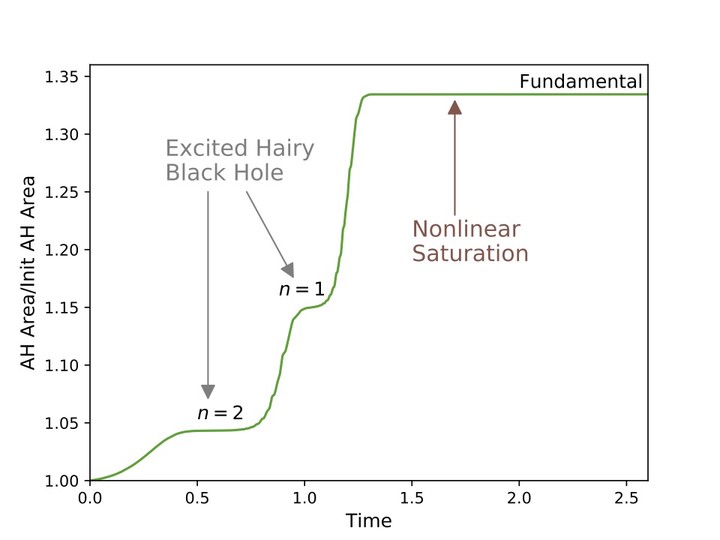
Abstract
We study the dynamics of unstable Reissner-Nordström anti–de Sitter black holes under charged scalar field perturbations in spherical symmetry. We unravel their general behavior and approach to the final equilibrium state. In the first part of this work, we present a numerical analysis of massive charged scalar field quasinormal modes. We identify the known mode families—superradiant modes, zero-damped modes, AdS modes, and the near-horizon mode—and we track their migration under variation of the black hole and field parameters. We show that the zero-damped modes become superradiantly unstable for large RNAdS with large gauge coupling; the leading unstable mode is identified with the near-horizon condensation instability. In the second part, we present results of numerical simulations of perturbed large RNAdS, showing the nonlinear development of these unstable modes. For generic initial conditions, charge and mass are transferred from the black hole to the scalar field, until an equilibrium solution with a scalar condensate is reached. We use results from the linear analysis, however, to select special initial data corresponding to an unstable overtone mode. We find that these data evolve to produce a new equilibrium state—an excited hairy black hole with the scalar condensate in an overtone configuration. This state is, however, unstable, and the black hole eventually decays to the generic end state. Nevertheless, this demonstrates the potential relevance of overtone modes as transients in black hole dynamics.